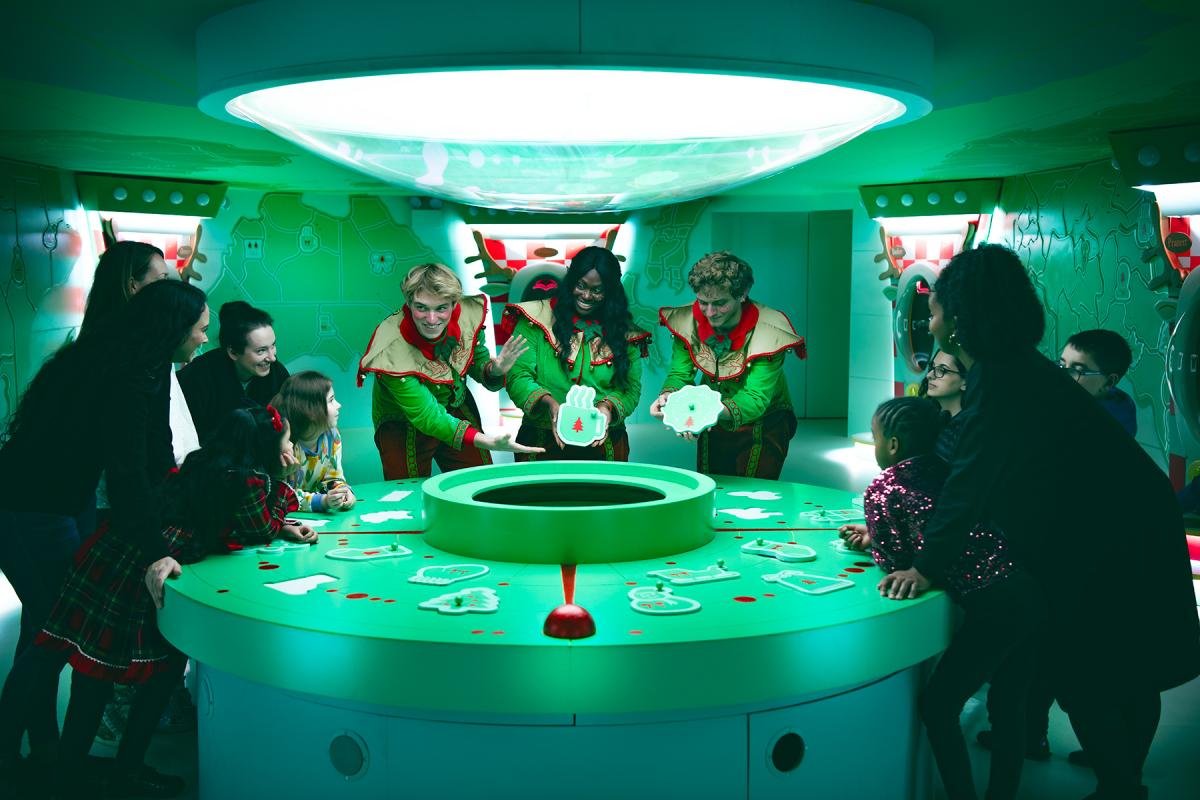
WISHMAS
Secret Cinema
London
2023
SERVICES:
Show Control Design
Game Design
Consultancy
Hardware Development
Software Development
Programming
Tech Installation
Training
About
Wishmas was Secret Cinema’s seasonal children's show, and their first with a completely original IP. The audience was taken on a magical journey through a wacky themed world helping Santa, his elves and the reindeer pull off another successful Christmas.
The System
Show Control within Show Control
When we were approached, overall show control was already being provided by another supplier. We originally were brought in to create a basic system that could open and close doors on cue. However, due to the interactive requirements of two of the rooms in the experience, our scope was expanded to include designing the system to run the games, specifying the right tech, programming the logic, creating custom content and installing what was needed. COGS was able to seamlessly integrate into the wider show’s control, essentially being ‘handed the reins’ when these rooms were active, and then handing control back over to the other system once the games were completed.
Interactive Games
The first room was called ‘The Merry Maps of Everywhere’. This large room had about 90 jigsaw puzzle pieces hung all around the walls and a large console in the centre with holes for those puzzle pieces. There were also nine “Reindeer Routers” - a skill based game where players need to press a reindeer’s nose in time with a radar blip viewed on a screen. We programmed up this game, provided the hardware and triggered the video content.
Once this was done, the players collected any of the puzzle pieces and put them in front of the reindeer who would tell them if they were correct or not, using COGS’s RFID system. Once the correct pieces were selected, they needed to go into the right holes in the centre console, triggering lighting, sound and video content.
The second room was called ‘The Great Clock of Now’. This contained a number of spin-able wheels, and players needed to work together to spin them at the same speed. We specified and installed components to sense how fast the wheels were spinning and translated this into different cues for lighting and sound to indicate to the players if they needed to speed up or slow down. The amount of messages sent to the show control system was so vast (when everyone in the room was spinning rapidly), it required us to develop some custom hardware to parse down the signals to just four speed states: stationary, slow, medium, and fast.
Conclusion
This was a great example of a project where we were brought on to handle a very discrete part of the overall show scope, but were quickly able to help out by taking on other elements of interactive technology as the show was developed. Being part of the process from a relatively early stage and already having our COGS system installed meant that we could respond quickly to additions, adding new bits of hardware to the system as ideas were settled, and flexibly adding to our show programming to bring them into the show quickly and with minimal hassle and cost.






